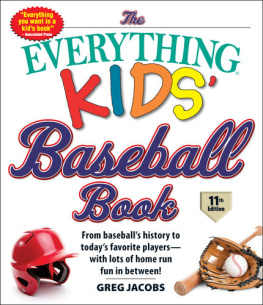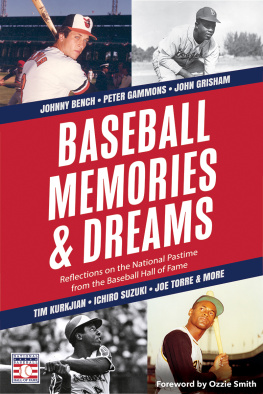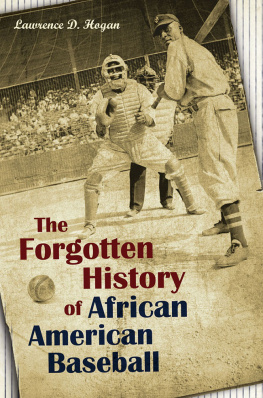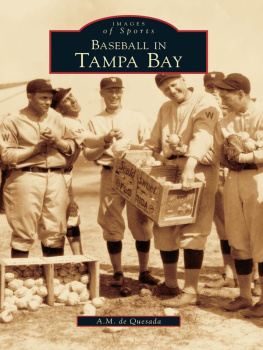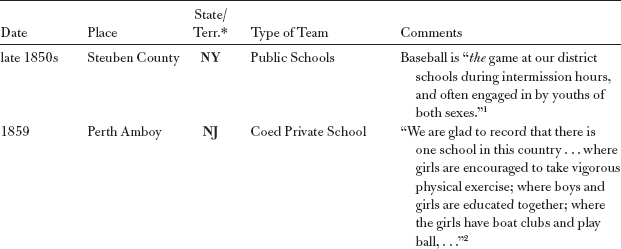Debra A Shattuck - Bloomer Girls: Women Baseball Pioneers
Here you can read online Debra A Shattuck - Bloomer Girls: Women Baseball Pioneers full text of the book (entire story) in english for free. Download pdf and epub, get meaning, cover and reviews about this ebook. year: 2017, publisher: University of Illinois Press, genre: Politics. Description of the work, (preface) as well as reviews are available. Best literature library LitArk.com created for fans of good reading and offers a wide selection of genres:
Romance novel
Science fiction
Adventure
Detective
Science
History
Home and family
Prose
Art
Politics
Computer
Non-fiction
Religion
Business
Children
Humor
Choose a favorite category and find really read worthwhile books. Enjoy immersion in the world of imagination, feel the emotions of the characters or learn something new for yourself, make an fascinating discovery.
- Book:Bloomer Girls: Women Baseball Pioneers
- Author:
- Publisher:University of Illinois Press
- Genre:
- Year:2017
- Rating:5 / 5
- Favourites:Add to favourites
- Your mark:
Bloomer Girls: Women Baseball Pioneers: summary, description and annotation
We offer to read an annotation, description, summary or preface (depends on what the author of the book "Bloomer Girls: Women Baseball Pioneers" wrote himself). If you haven't found the necessary information about the book — write in the comments, we will try to find it.
Debra A. Shattuck pulls from newspaper accounts and hard-to-find club archives to reconstruct a forgotten era in baseball history. Her fascinating social history tracks women players who organized baseball clubs for their own enjoyment and even found roster spots on mens teams. Entrepreneurs, meanwhile, packaged womens teams as entertainment, organizing leagues and barnstorming tours. If the women faced financial exploitation and indignities like playing against men in womens clothing, they and countless ballplayers like them nonetheless staked a claim to the nascent national pastime. Shattuck explores how the determination to take their turn at bat thrust female players into narratives of the womens rights movement and transformed perceptions of womens physical and mental capacity.
Vivid and eye-opening, Bloomer Girls is a first-of-its-kind portrait of America, its women, and its game.
|CoverTitle PageCopyrightContentsPrefaceAcknowledgmentsIntroduction1. Creating a National Pastime2. 18651879: Contesting a National Pastime: The Amateur Game3. 18651879: Commodifying a National Pastime The Professional Game4. The 1880s: Molding Manly Men and Disappearing Women5. The 1890s: New Women, Bloomer Girls, and the Old Ball GameConclusionAppendixNotesSelected BibliographyIndex|
This work fills a noteworthy gap in the scholarship and will be of importance to any individual interested in sport, womens history, and gender studies. Recommended.Choice
It is safe to say that Bloomer Girls may be considered the definitive book on womens baseball in the nineteenth century. Shattucks research shows on every page, and she masterfully decodes primary sources and constructs a satisfying answer for anyone who has ever wondered why baseball is a mans game.Journal of the Illinois State Historical Society
Bloomer Girls would be a helpful resource for researchers interested in social history, particularly regarding gender roles and sports, and for baseball fans interested in the history of the sport.FGS Forum
|
Debra A. Shattuck is Provost and Assistant Professor of History at John Witherspoon College.
Debra A Shattuck: author's other books
Who wrote Bloomer Girls: Women Baseball Pioneers? Find out the surname, the name of the author of the book and a list of all author's works by series.




